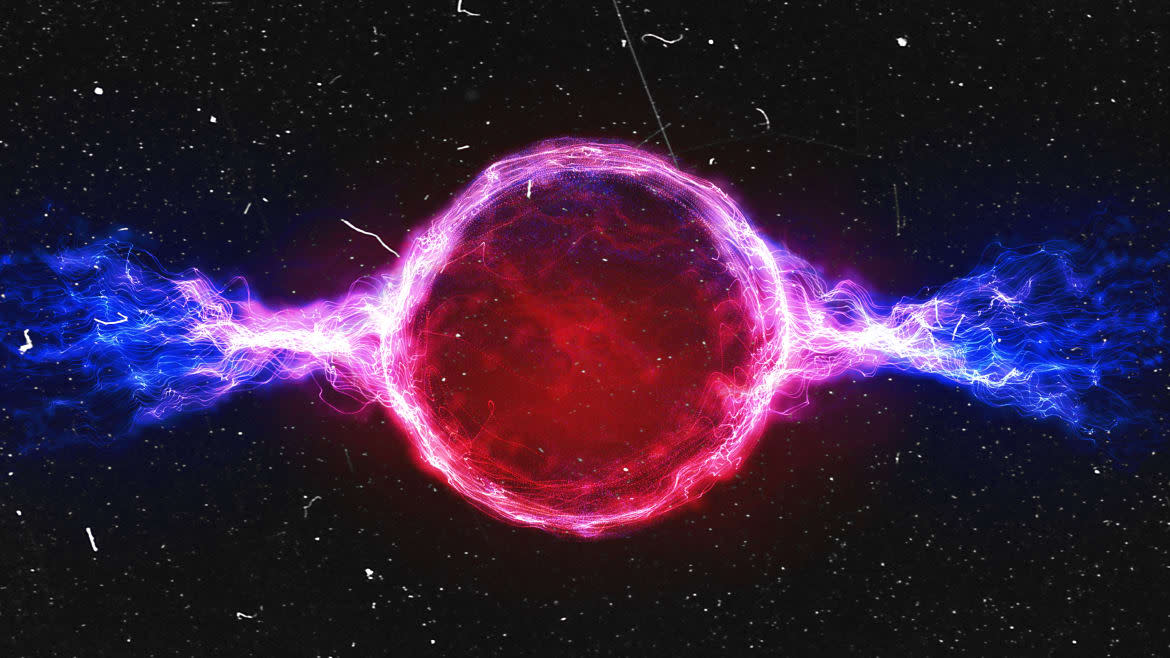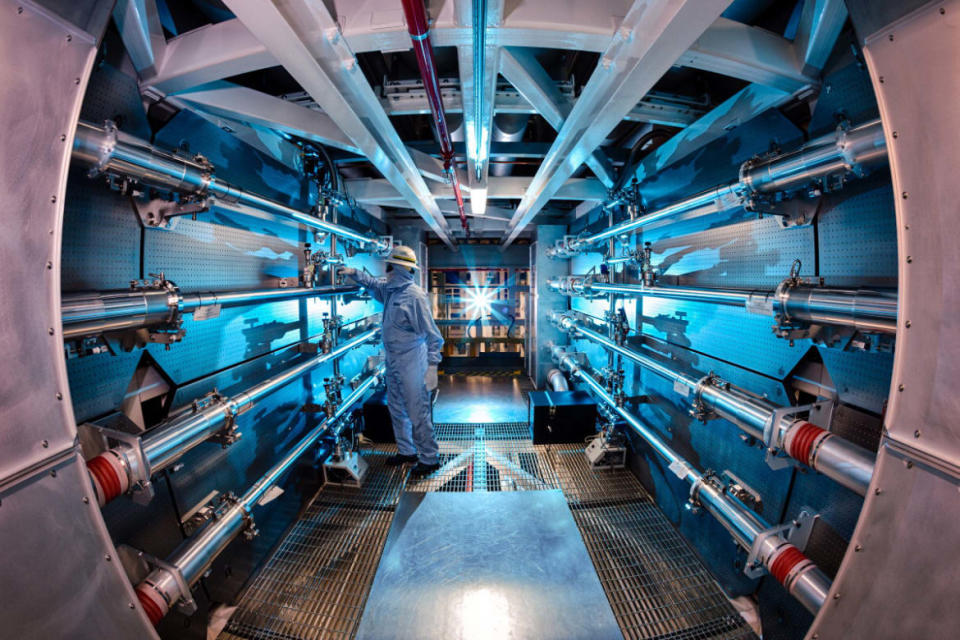The Holy Grail of Energy Generation Might Finally Be Within Our Grasp

If you’ve ever been outside during the day, you’ve seen a fusion reactor—though you’re not supposed to stare directly at it. The sun is our fusion reactor in the sky. It’s constantly fusing hydrogen atoms to create helium, and this process generates a massive amount of energy, which produces the light and heat that make life on Earth possible.
Here on the surface of this planet, we’re trying to replicate this process to revolutionize how we generate clean electricity. Fusion researchers believe this technology could be the key to meeting our vast energy needs. Depending on who you talk to, we’re either on the cusp of one of the most important breakthroughs in all of science and technology; or we’re a long way away from our goals.
We’ve been on a quest to unlock the potential of nuclear fusion for a long time. Nuclear fusion was first achieved by British physicist Ernest Rutherford in 1934, when he and his colleagues discovered that they could bombard deuterium with deuterium nuclei (two versions of hydrogen with altered masses) to create helium.
Since then, we’ve been trying to harness the energy created by nuclear fusion to produce carbon-free electricity—a tremendous amount of it. The goal of fusion research is to achieve what’s called “ignition,” which is when the fusion reaction creates more energy than was used to spark the reaction.
How We Might Finally Get Over Our Fear of Nuclear Power
“If you add up the mass of the two lighter ones and then take the mass of the heavier one, there’s a difference there. That difference in mass is actually released in energy,” Carolyn Kuranz, a plasma physicist at the University of Michigan, told The Daily Beast. “Matter itself contains a huge amount of energy, but we just don’t have a way of releasing it, except either through fission reactions—which also releases a lot of energy—or through fusion reactions.”
Fission is what happens in our existing nuclear reactors. That process involves splitting atoms, rather than combining them. We’re interested in developing a fusion reactor because it would produce roughly four times as much power as a fission reactor.
Alex Zylstra, an experimental physicist at the Lawrence Livermore National Laboratory, told The Daily Beast there are many other benefits to fusion—most especially that there’s no possibility of a radioactive meltdown like what might occur in a fission reactor. In a fusion reactor, “it’s very easy to stop the reaction,” Zylstra said. “If anything goes wrong, it basically just stops automatically because it’s so hard to get going in the first place.”
One of the key concerns about nuclear power comes from people’s knowledge of major meltdowns that have occurred with fission reactors, but fusion wouldn’t have the potential to cause such a meltdown, which is one of the reasons it would be preferable for generating energy.
Zylstra said fusion also produces essentially zero long-lived radioactive waste. Its fuel, hydrogen, is nearly limitless (and extremely cheap) because it can be extracted from seawater. Nuclear fusion is essentially the carbon-free energy producer of our dreams.
“We need a lot of power and the power demand of the world just keeps going up in developing countries and emerging economies, so that’s a very hard challenge,” Zylstra said. “We need a lot of sources of new power that aren’t creating carbon dioxide, and fusion is potentially one of those if we can get it to work.”
There are two main types of fusion that are currently being researched. The first, inertial confinement fusion, involves using lasers to put the fuel under a massive amount of pressure and heat. At the National Ignition Facility where Zylstra does his research, scientists aim 192 lasers that produce up to 500 trillion watts of power at hydrogen isotopes to achieve fusion.
“We’re producing pressures that are several times higher than the center of the sun, temperatures that are several times higher, intensities that are about similar, but that’s in a very small volume,” Zylstra said.
You might think we’d want to just exactly copy what the sun is doing to achieve nuclear fusion, but we have to adjust the conditions to achieve it here on Earth. The sun can achieve fusion at the temperatures and pressures it does because of its size (almost one million Earths could fit in the sun). “The sun is essentially just so heavy that it compresses hydrogen atoms constantly,” Kuranz said.

Inside the National Ignition Facility.
The other main form of fusion that researchers are working on is called magnetic confinement fusion. This is done at the International Thermonuclear Experimental Reactor (ITER) in France. With this approach, extremely powerful magnets are used to produce the heat and pressure that cause fusion.
Both methods have led to major breakthroughs in fusion research in recent years. With inertial confinement fusion, the National Ignition Facility was able to get us one step closer to ignition last year. Researchers were able to produce a fusion reaction where most of the heat that was created was coming from the reaction itself—rather than the lasers they were using.
Over at the Joint European Torus (JET) in the U.K., we saw a breakthrough in magnetic confinement fusion last year. Researchers were able to produce 59 megajoules of energy for over five seconds, a new world record.
“I think it really shows a lot of promise for both of these different methods—the inertial confinement and the magnetic confinement—and hopefully this motivates more interest from government funding and private industry,” Kuranz said. “This is viable, and this is also the time to invest in these technologies.”
Kuranz said one of the things that’s been holding fusion research back over the decades is a lack of investment. She said we’re now seeing a lot more private investment in this research, which she believes could help get us to a fusion reactor sooner than we otherwise may have. Investors are pouring billions into trying to become the first to make fusion work.
“Someday I expect to see it producing power on the grid, and that would be very exciting and very important for humanity to have these sources of energy,” Zylstra said.
No one knows when fusion power will be achieved, but we’re getting closer every year. We harness the power of sunlight with our solar panels, but nuclear fusion researchers want to bring the sun to Earth.
Get the Daily Beast's biggest scoops and scandals delivered right to your inbox. Sign up now.
Stay informed and gain unlimited access to the Daily Beast's unmatched reporting. Subscribe now.

